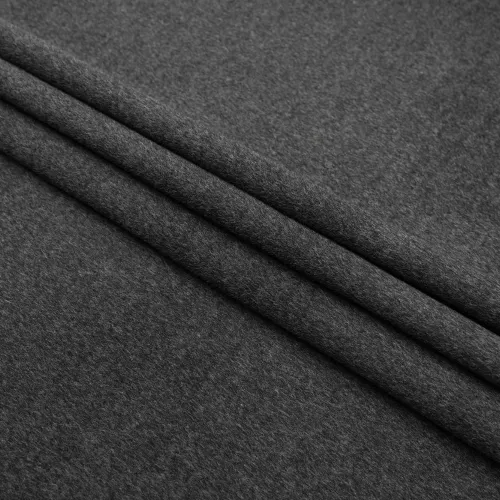The Timeless Excellence of Premium Wool Garments
In the world of professional attire, wool suits have maintained their position as the gold standard for business wear across generations. This natural fiber's remarkable versatility and inherent properties make it the cornerstone of quality tailoring, offering unmatched benefits that synthetic alternatives simply cannot replicate. From boardrooms to formal events, wool suits represent the pinnacle of refined style and sophisticated functionality.
The journey of wool from sheep to suit is a testament to both natural engineering and human craftsmanship. Each fiber possesses unique characteristics that contribute to the overall performance and appeal of the final garment. Understanding these properties helps explain why discerning professionals consistently choose wool suits over other materials for their corporate wardrobes.
Superior Properties of Wool in Professional Attire
Natural Temperature Regulation
One of wool's most remarkable features is its ability to maintain comfortable body temperature across various weather conditions. The natural crimp in wool fibers creates tiny air pockets that provide excellent insulation in cold weather while allowing excess heat to escape in warmer conditions. This makes wool suits particularly suitable for professionals who transition between different environments throughout their workday.
The temperature-regulating properties of wool suits extend beyond simple warmth retention. The fiber's unique structure actively manages moisture vapor, helping to prevent the uncomfortable clamminess often associated with synthetic materials. This natural breathability ensures the wearer remains comfortable during lengthy meetings or high-pressure presentations.
Exceptional Durability and Recovery
Professional attire must withstand regular wear, and wool suits excel in this aspect. Each wool fiber can be bent up to 20,000 times without breaking, significantly outperforming other natural and synthetic fibers. This inherent strength translates to suits that maintain their shape and appearance even with frequent use.
The natural elasticity of wool fibers contributes to exceptional wrinkle resistance. Wool suits can recover from creasing and maintain their crisp appearance throughout long workdays. This resilience reduces the need for frequent pressing and ensures a polished look from morning meetings to evening events.
Professional Aesthetic and Versatility
Premium Drape and Tailoring Potential
The natural properties of wool make it exceptionally receptive to tailoring techniques. The fiber's structure allows for precise shaping and molding, enabling skilled tailors to create suits with impeccable fit and drape. This superior tailoring potential results in garments that enhance the wearer's presence and professional image.
Wool suits exhibit an unmatched ability to conform to the body's contours while maintaining their structure. This balance between flexibility and form creates a refined silhouette that other materials struggle to achieve. The natural luster of wool also contributes to an understated elegance that's particularly appropriate in professional settings.
Color Retention and Surface Appeal
Professional attire demands consistency in appearance, and wool suits deliver exceptional color stability. The fiber's complex structure allows for deep, rich dye penetration, resulting in colors that remain true even after years of wear. This color fastness ensures that dark business suits maintain their professional appearance without developing the shine or fading common to synthetic alternatives.
The surface characteristics of wool contribute to its professional appeal. The natural scaling of wool fibers creates a subtle texture that adds depth to the fabric's appearance while helping to conceal minor surface imperfections. This quality is particularly valuable in professional environments where impeccable presentation is essential.
Sustainable and Economic Benefits
Environmental Credentials
Modern professionals increasingly consider environmental impact in their purchasing decisions. Wool suits represent a sustainable choice, being both biodegradable and renewable. The natural fiber decomposes completely within months when disposed of, unlike synthetic materials that persist in the environment for decades or centuries.
The production of wool suits generally requires less energy and fewer chemical processes compared to synthetic alternatives. This reduced environmental footprint aligns with corporate sustainability goals while providing superior performance. The longevity of wool garments also contributes to their environmental benefits by reducing the need for frequent replacement.
Long-term Value Proposition
While the initial investment in a quality wool suit may be higher than synthetic alternatives, the extended lifespan and superior performance characteristics offer compelling long-term value. Wool suits maintain their appearance and functionality through years of regular use, reducing the total cost of ownership over time.
The adaptability of wool suits to different seasons and occasions further enhances their economic value. A well-chosen wool suit can serve multiple professional purposes, from daily office wear to important client meetings and formal events, eliminating the need for multiple specialized garments.
Frequently Asked Questions
How Often Should a Wool Suit Be Cleaned?
Professional wool suits should typically be dry cleaned every 3-4 wearings, or when visibly soiled. However, regular brushing after wear and proper hanging between uses can extend the time between cleanings. Always allow at least 24 hours of rest between wearings to maintain the fabric's natural recovery properties.
What Makes Some Wool Suits More Expensive Than Others?
The price variation in wool suits primarily depends on the quality and fineness of the wool fibers used, the craftsmanship in construction, and the reputation of the manufacturer. Superior wool grades, hand-tailoring techniques, and premium construction methods contribute to higher costs but typically result in better drape, comfort, and longevity.
How Can You Tell the Quality of a Wool Suit?
Quality indicators for wool suits include the Super number (S100s to S200s), which indicates fiber fineness, the clarity of pattern matching at seams, the presence of hand-stitching details, and the overall drape of the fabric. A quality wool suit should feel smooth to the touch, recover well from creasing, and demonstrate even stitching throughout.

